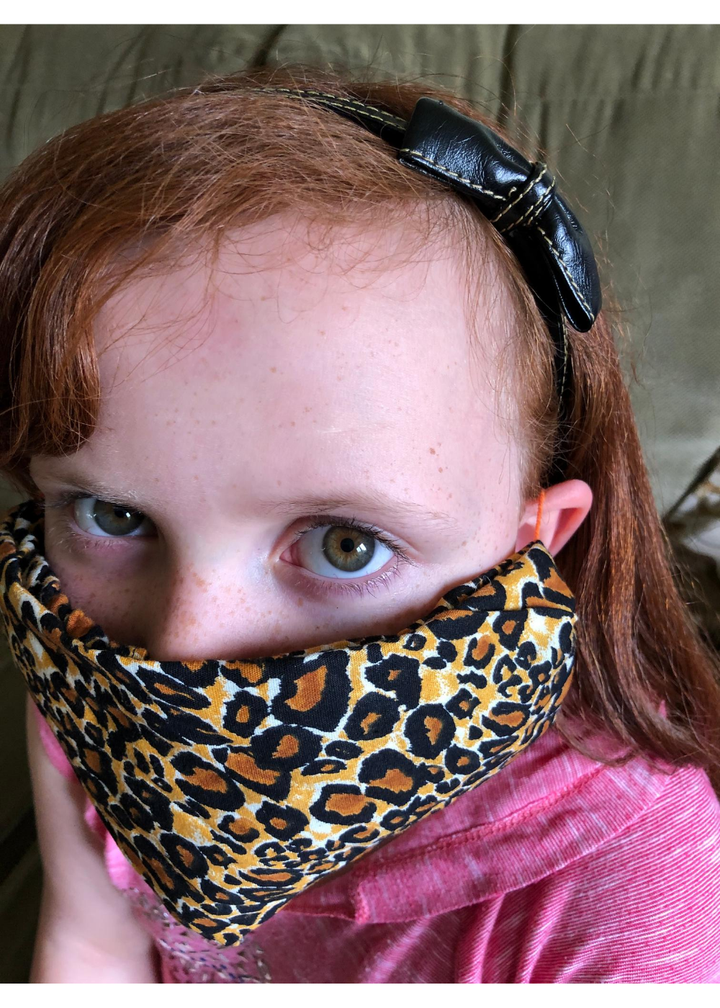Fidgeting, discomfort, forgetfulness, or just plain boredom are all very valid reasons why kids may have a hard time keeping their face masks on, much to the chagrin of their parents or caregivers.
While this may be a mild frustration for many, schools with mandatory mask policies in provinces like Ontario and Alberta will need masks on everyone in certain grades heading back to class in order to safely re-open.

The first tip to getting kids used to wearing face masks for long periods? Start now, Dr. Peter Maric advises. The chief medical officer of Waterloo, Ont.-based respirator company O2 Canada and father of two knows from experience that getting kids to wear something on their faces, even for short grocery trips, takes tolerance-building over a long period of time.
“Get your kids used to the idea that this is a normal thing to do, so that when September rolls around they’re more accustomed to it,” he told HuffPost Canada.
In an informal callout over Twitter, several Canadian parents shared their go-to tricks to make masks more tolerable for their little ones. While some had cheeky responses (“tape their hands to their sides,” one user suggested; “crazy glue” was another tip made in jest), many were eager to share how their success stories. Here’s what they had to say:
Monkey see, monkey do
New Brunswick mom Jenna Morton was pleasantly surprised when asking her kids to wear masks was met with little pushback from them.
“I think part of the reason is they see us [my husband and I] wearing them and not complaining,” she said.
The digital media owner of Pickle Planet Moncton told HuffPost Canada that modelling good mask etiquette and hygiene — like using clean hands to put it on or remove it — normalized appropriate mask use for her nine-year-old daughter and twin seven-year-old sons.
Other parents like Morton have also found great success by being mask role models, including Ontario mom Christine McNaughton.
Explain how COVID-19 spreads in a simple way
You’re more likely to follow someone’s advice if you know why they’re giving it. It’s the same with kids; impressing upon them the safety aspect is important.
There’s no need to recite government recommendations or scare them with grim statistics. Parents like Meghan Latta use clear language to break down what the coronavirus is and how a mask protects everyone.
It can help to make the conversation more personal too. Asking children what they miss from before the pandemic, like hugging friends or going to birthday parties, can really underscore for kids how they play a role in helping things get back to normal eventually.
Shop comfy
While grown-ups may put up with a scratchy or thick covering, kids with sensitive skin won’t be so forgiving. To minimize itchiness, consider comfort and size when buying face masks for kids. It may help to purchase a variety of textures to see which mask your little one prefers the most.
Distract them from fidgeting
Give them creative control ...
Morton’s daughter Clara developed an appreciation for masks after she made her own. During the pandemic’s early stages, masks for sale were few and far in between. Morton recalls the pair crafting no-sew face masks.
“She rummaged through fabric pieces, she folded it up and used rubber bands on the end,” Morton said. “She really got involved in that process of thinking about getting a sense of ownership over what she made.”

Kids may be more excited about masks if they see them as fashion accessories. If so, it can help to make them part of the buying or sewing process: giving them a say on what colours and patterns are on their masks can encourage wearing.
... Or an incentive
Hey, who among us hasn’t accepted a parental bribe or two?
Teach them how to breathe deeply
As one Hamilton, Ont., mom notes, some kids with existing respiratory issues or mental health needs may struggle to inhale and exhale when their mouths are covered. She taught her son breathing exercises to help him breathe a little easier.
If you’re looking to make breathing regulation part of your family’s routine, PN Medical recommends people take five “quality” breaths at three intervals: Before putting a mask on, once a mask is on, and right after taking it off.
Reminding kids to breathe slowly while wearing their mask can also help prevent hyperventilation related to panic or overstimulation. “Box breathing” is a common technique for instant calm.
Make masks entertaining
Kids love games, so why not make masks as fun as possible? For Morton, she knows that her twins and other boys find it hilarious to compare masks to wearing underwear. Reacting in exaggerated shock when they “forget their underwear” can add an element of play that will keep kids mindful of what’s on their face.
One Toronto dad suggests treating face masks like “Halloween costumes” or “masked superheroes,” two dress-up opportunities cape-loving children will appreciate.
Be realistic
Not all kids will be ready to wear masks full-time come September and that’s OK. Being too young to understand and having existing health conditions may make mask-wearing impossible for several hours at a time.
If your family’s in this camp, it may be wise to ask your school as soon as possible about education alternatives that reduce mask usage, such as increased homeschooling or shortened hours spent near others.
Also on HuffPost: